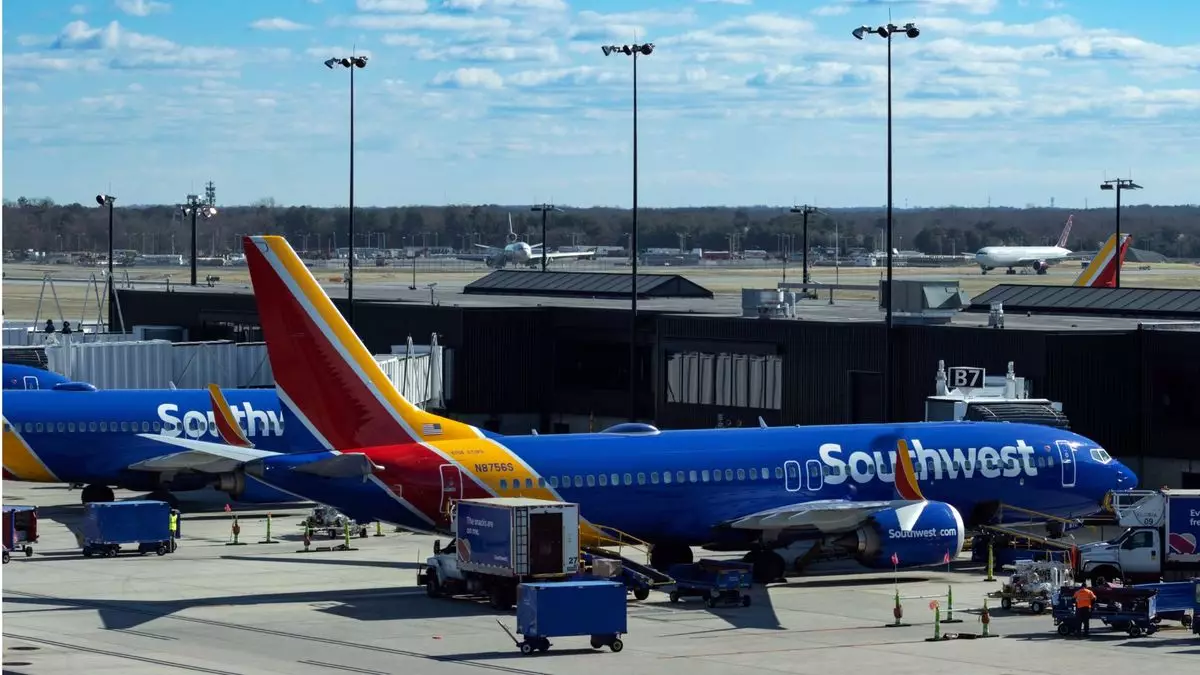On April 1, Ryan Green, the executive vice president and chief transformation officer at Southwest Airlines, will be stepping down from his position, as stated in a recent filing with the U.S. Securities and Exchange Commission (SEC). Green’s resignation, a significant shift in the airline’s leadership, was communicated to the company on February 18. His tenure at Southwest began in 2002, climbing through the ranks to assume his current role in July 2024. Prior to this, he made notable contributions as chief commercial officer and chief marketing officer, reshaping the airline’s approach towards customer engagement and brand strategy.
Green’s departure raises questions about the stability and direction of Southwest Airlines during a time of considerable corporate turmoil. This transition comes on the heels of Southwest’s announcement to reduce its corporate workforce by 15%, a decision described by CEO Bob Jordan as „unprecedented“ in the airline’s history. Such drastic measures indicate deeper systemic issues within the organization and may signal to stakeholders a period of reevaluation and restructuring.
The recent SEC filing also disclosed a significant alteration in the cooperative agreement between Southwest and Elliott Investment Management, allowing the latter to increase its ownership stake from 14.9% to 19.9%. This amendment follows a period of tension marked by Elliott’s public criticism of Southwest’s governance and strategic direction, which even led to threats of a proxy battle last year. The alliance’s latest iterations, including the appointment of six new board members, served to diffuse immediate conflicts but also highlighted ongoing concerns regarding the airline’s leadership dynamics.
The enhancement of Elliott’s stake signifies not just a vested interest in the airline’s success but also a potential shift towards more aggressive influence over corporate policies. As stakeholders anxiously watch Southwest maneuver through these transitions, the implications of such power shifts could prove consequential. The ability of investment firms to exert pressure on corporations is a growing trend in the airline industry, and Southwest may face heightened scrutiny and expectations moving forward.
As Southwest Airlines embarks on this path of transformation, the potential impact on corporate culture and operational efficiency is paramount. The departure of senior executives, coupled with substantial layoffs, could lead to disruptions in company morale and productivity. Moreover, given the airline’s struggle to adapt to a rapidly changing business environment, how effectively Southwest can navigate this turbulence remains to be seen.
Ultimately, the intersection of leadership changes, investor pressures, and operational overhauls will define the next chapter for Southwest Airlines. With Ryan Green’s exit, the airline faces the challenge of consolidating a clear vision while maintaining stakeholder confidence. The steps taken in the coming months will not only shape Southwest’s operational framework but will also significantly influence its standing in an increasingly competitive marketplace. The crucial question for Southwest — can it adapt successfully while learning from past missteps or will these upheavals deter its potential for growth? Only time will reveal the answers.


Napsat komentář